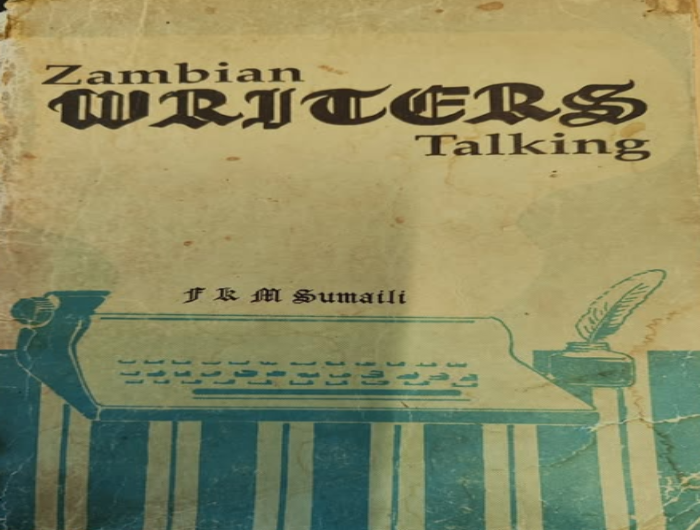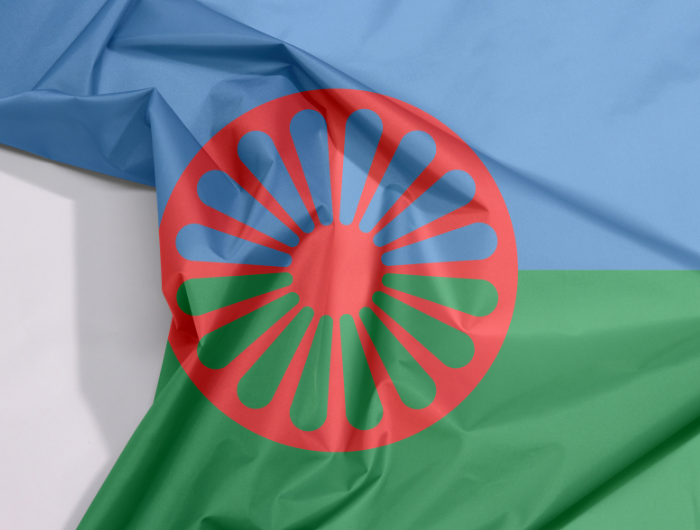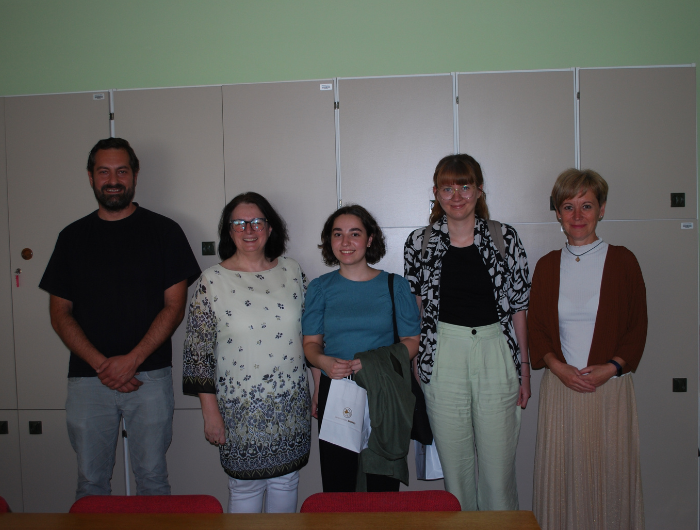Current Projects
Para-Romani varieties, which have a Romani vocabulary but use the grammatical frame of another language, typically that of the co-territorial majority language, are documented in historical sources from the seventeenth century onwards. However, the varieties spoken nowadays and labelled as Para-Romani are better defined as registers or styles of the respective majority languages, since the largest part of their Romani lexicon has been lost and they are only used in specific contexts. More recent literature on Romani reports on the existence of a Para-Romani variety in which a Romani lexicon is combined with Hungarian and used by the Romungros in Hungary.
The project, which is carried out in collaboration with Márton A. Baló from the Hungarian Research Centre for Linguistics and Mátyás Rosenberg from the Eötvös Loránd University, is the first attempt to collect data from this Hungarian variety. Based on historical data as well as newly collected data from social media and through semi-structured interviews, we look into the variety’s lexical and morphological features, its sociolinguistic functions and the situations in which the special vocabulary is activated. We will also try to discover its formation and emergence, by identifying the sources that may be considered the earliest written documentation of Hungaro-Romani.
Research: Zuzana Bodnárová, Márton A. Baló, Mátyás Rosenberg
Central Europe is linguistically a very interesting region, as all four major language families of Europe come together here: Germanic, Romance, Slavic, and Finno-Ugric. In the midst of this are the Roma and their heritage language Romani. Romani is prone to language contact as it is overarched by the language(s) spoken by the majority population among whom the Roma live. We are concerned with various aspects of language contact that gave rise to common features found in the languages of the region.
Currently, we are investigating the phenomenon of adding directions to remote places, e.g., going “out to Vienna” but “up to Graz”, which is typical of South German varieties. The same phenomenon is also found in Hungarian and Slovenian, as well as in the Romani dialects of the region. We want to explore why we use this form of place-making in our imagination and how it came to be a feature of our region that spans over structurally different languages.
Research: Daphne Reitinger-Zemann, Jakob Wiedner
The project seeks to contribute to the understanding of second language (L2) attainment in multilingual adults, more specifically in post-pubescent L2 learners. It aims to identify attributes and characteristics possessed by highly proficient L2 learners that positively influence high levels of attainment, and, conversely, the attributes and characteristics of non-highly proficient L2 learners with similar exposure, that may negatively influence high levels of attainment.
The study challenges the long-standing critical period hypothesis, which suggests that post-pubescent learners have an inherently limited potential for native-like L2 competence due to reduced brain plasticity. It examines the role of individual factors such as motivation, social-experiential factors, and musical perception skills in achieving native-like L2 attainment.
Research: Daphne Reitinger-Zemann
The use of irony and individual language politics in Paolo Sorrentino's cinematic language and prose

Paolo Sorrentino's film and prose works are used to examine various communication strategies and stylistic elements of language that the author uses to characterize protagonists. One focus of this project lies on the analysis of different linguistic forms of irony in Sorrentino's works. Another aspect that will be investigated is the conceptualizations of ‘society’ and ‘culture’ in the real world and in linguistics, which permeate all of the author's films and prose works. The third focal point is the examination of linguistic stylistic devices used to depict characters. Sorrentino uses a variety of linguistically dominated forms of representation to emphasise real and fictional figures that have shaped Italian society since the 1970s.
Public figures from Andreotti to Berlusconi, from Jep Gambardella to Tony Pagoda become tangible through the way they are portrayed. However, the protagonists in Sorrentino's works are not only people, but also monumental art objects and landscapes. They play a key role in the thematization of contrasting and mutually dependent concepts. These include the sacred versus the profane, life and death, comedy and tragedy and reflections on the past, present and future. Sorrentino's oeuvre provides a comprehensive basis for examining the linguistic and stylistic features that characterize the author's artistic style. The aim of the project is to analyse these particularities from a linguistic-literary, socio-cultural and cinematic point of view.
Research: Giulia Tardivo

Of roots and routes: local and translocal voices in Southern African literatures and film
The project explores the relationship between language and identity in Southern Africa, specifically focusing on the linguistic repertoires and voices in literary texts and films. Plurality and hybridity are seen as inherent aspects of linguistic and cultural practices in the region. They are believed to manifest in various forms within literary and cinematographic texts. The project seeks to explore the interplay between language, identity, mobility, and hybridity, with a focus on local cultural producers and an understanding of the larger sociolinguistic and literary-cultural contexts.
A key aspect is the agency of multilingual creators and performers in constructing identities through language. In terms of methodology, both sociolinguistic and literary-cultural perspectives are taken into account. The fluid and dynamic nature of language practices are highlighted, emphasizing the concept of the linguistic repertoire: the range of linguistic resources used in a work and their purpose in constructing, negotiating, and potentially negating identities.
Research: Angelika Heiling
The shared settlement of Styria by German and Slovenian speakers dates back to the early Middle Ages and led to a long-lasting mutual influence. In the feudal period, language played a minor role in identity formation. Over time, an urban-agricultural dichotomy developed, overlapping with language use. In the 18th and 19th centuries, an ethnolinguistic nationalism emerged, leading to nationalist unrest between "Germans" and "Slovenes" in the late 19th and early 20th centuries. The World Wars and the contrast between capitalism and communism led to the separation between Austria and Slovenia. Following Slovenia’s independence, there has been a gradual rapprochement.
This situation prompts us to examine the matter more closely, specifically asking, "What do we think of each other now?" and since interpersonal contact is known to rely heavily on language, we primarily ask, "What do we think about our neighbor’s language?" Using a discourse-historical approach (Reisigl & Wodak 2009), we aim to illustrate how language ideologies manifest in the understanding of multilingualism and how historical processes are reflected in the metalinguistic discourse. We will speak with people in the Styrian border region, on both the Austrian and Slovenian sides, as well as in Prekmurje, a region historically closely intertwined with Styria.
Reisigl, Martin and Ruth Wodak (2009): “The Discourse-Historical Approach (DHA)”. In: Methods of Critical Discourse Analysis. Ed. by Ruth Wodak and Michael Meyer. Los Angeles: SAGE, 87–121.
Research: Jakob Wiedner, Chiara Wagner
By means of semi-structured interviews, conducted by a deaf Austrian Sign Language (ÖGS) signer, the research project explores the language background and current language use of deaf migrants in Styria.
Research: Julia Gspandl
Video: "Project description in International Sign"
Completed projects
The interdisciplinary project Multilingual Styria describes multilingual practices and plurality in the Austrian province of Styria from a diachronic and a synchronic perspective. A focus of the study are the correlations of dominant and dominated languages and varieties in the context of migration, aiming at an analysis of the localized outcomes of global dynamics. The socio-political relevance of languages for individual communities and, moreover, beyond that for society as a whole will be argued. The main objectives of the project were (a) to document regional linguistically based identity constructions, (b) to make visible and raise awareness for historically evolved plurality as a typical feature of the region, (c) to explore the sociolinguistic phenomena indicative of superdiversity resulting from more recent migration dynamics (Blommaert/Backus 2012), (d) to enable public participation through the interactive character of the project.
Multilingual Graz documents the language plurality of Graz in cooperation with plurilingual speakers and their associations as well as educational institutions and municipal authorities. The in this way gathered information on languages in Graz is made accessible via a web page. In the future, this information will be used in trainings tailored to the needs of practitioners from various fields. Beyond these research activities, Multilingual Graz initiates and supports both cultural and academic activities with respect to multilingualism.
The study Multilingual Communities in Graz analyzed the sociolinguistic situation of three communities who have migrated to Graz during the last few decades:
- Speakers of Farsi of whom some are proficient in other languages of their region of origin;
- Speakers of Kinyarwanda and Kirundi from Rwanda and Burundi who, in addition to Swahili as lingua franca of their region of origin, use the former colonial languages English and/or French;
- Speakers of Turkish who often use other languages from their region of origin, predominantly Kurmanji.
Semi-structured interviews were used to collect data on language use, language attitude and language transmission. The aim of this project is to describe the linguistic plurality in the context of urban multilingualism while further demonstrating the socio-political relevance of individual languages.
ROMLEX documents the Romani lexicon. Currently, users have the opportunity to consult materials in over 20 different dialects of Romani and to obtain translations into English, German, and other relevant majority languages (Hungarian, Romanian, Serbian, etc.) via a freely accessible web page.
The Plurilingualism Research Unit produced teaching materials in the Romani varieties of Arlije, East Slovak, Kalderash and Lovara. Within the framework of the project, Romani teaching can take place on different educational levels (primary to tertiary) and in different regions of Europe.
RomBase offers information on the socio-cultural and socio-historical situation of the Roma. By presenting well-researched material, RomBase contributes to the decrease of prejudice and thus helps combat stigmatization and discrimination. It furthermore aims to improve the educational situation of and about the Roma by giving teachers and students an opportunity to seriously deal with their culture and history.




